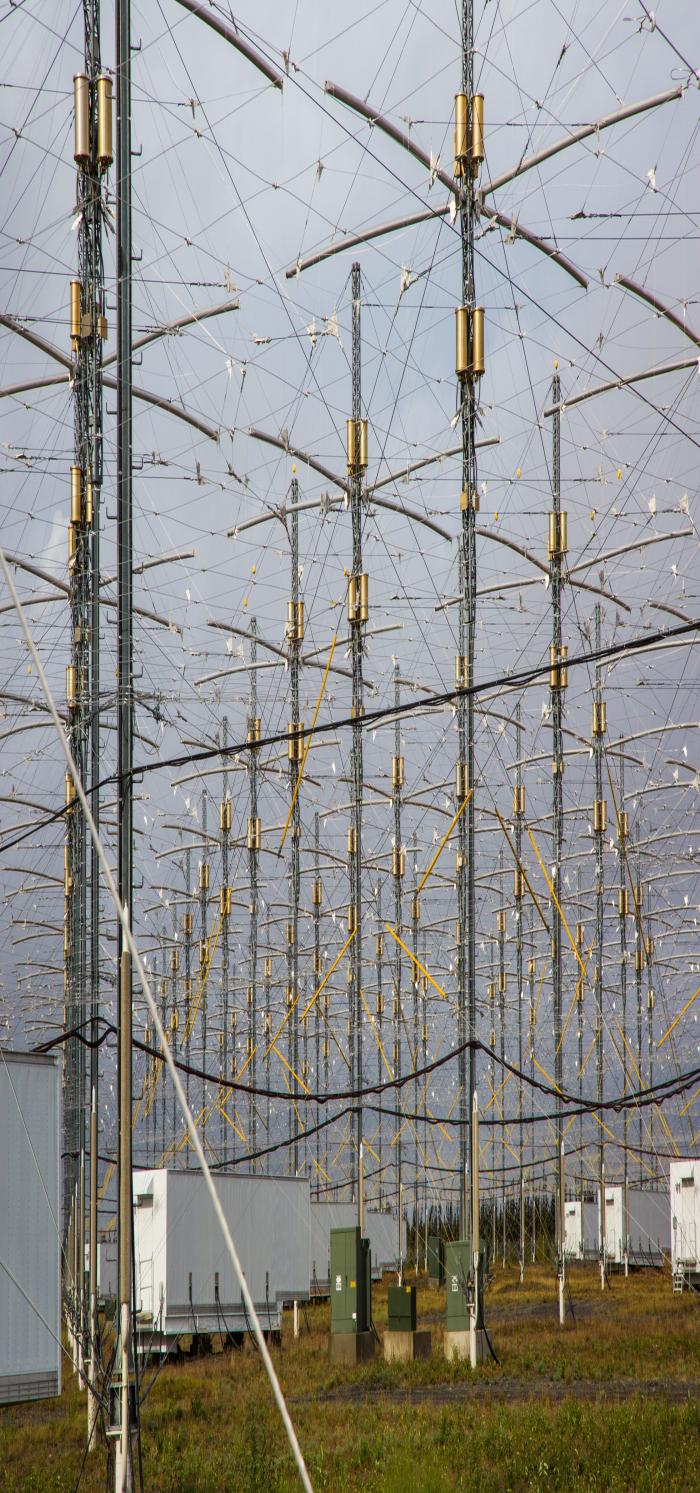By: Ned Rozell, writer, Geophysical Institute, University of Alaska Fairbanks
The High-frequency Active Auroral Research Program (HAARP), is the world's most capable high-power, high-frequency transmitter for study of the ionosphere. Operation of the research facility was transferred from the United States Air Force to the University of Alaska Fairbanks (UAF) in August of 2015, allowing HAARP to continue with exploration of ionospheric phenomenology via a land-use cooperative research and development agreement.

The HAARP program is committed to developing a world-class ionospheric research facility consisting of:
- The Ionospheric Research Instrument (IRI), a high power transmitter facility operating in the High Frequency range. The IRI can be used to temporarily excite a limited area of the ionosphere for scientific study.
- A sophisticated suite of scientific or diagnostic instruments that can be used to observe the physical processes that occur in the excited region.
Scientific instruments installed at the HAARP Observatory can also be used for a variety of continuing research efforts that do not involve the use of the IRI but are strictly passive. These include ionospheric characterization using satellite beacons, telescopic observation of the fine structure in the aurora, and documentation of long-term variations in the ozone layer.
HAARP will soon host its first campaigns under university ownership. Technicians are preparing the site for two science missions in February 2017. UAF scientists will run one experiment and researchers from Los Alamos National Laboratory in New Mexico the other.
Geophysical Institute scientists at UAF will fire the transmitters as part of a three-year experiment involving a few elements of complicated space physics. The Los Alamos researchers will use HAARP to generate irregularities in the ionosphere to test satellite-to-ground communications under conditions similar to solar storms. Large solar storms can disrupt communications and sometimes take out power grids.
Since it opened 13 years ago HAARP hosted many scientists doing applied research for the military. One such study was using the antenna array to heat a part of the ionosphere, which in turn acted as a low-frequency antenna that could send an ocean-penetrating signal to a submarine.
The military experiments and the complex nature of studying a region people cannot see or easily understand have fed a controversy about HAARP. Despite the facility being a magnet for conspiracy theorists, Geophysical Institute Director Bob McCoy thought HAARP was too valuable to fall to the dozer blade and hopes the February experiments will help attract customers to HAARP by showcasing UAF's ability to run it. As technicians at the site replace vacuum tubes and lubricate moving capacitor plates that make up the powerful radio-frequency transmitters, HAARP is readying for its first customers of a new era.
More information is available on the HAARP website.
